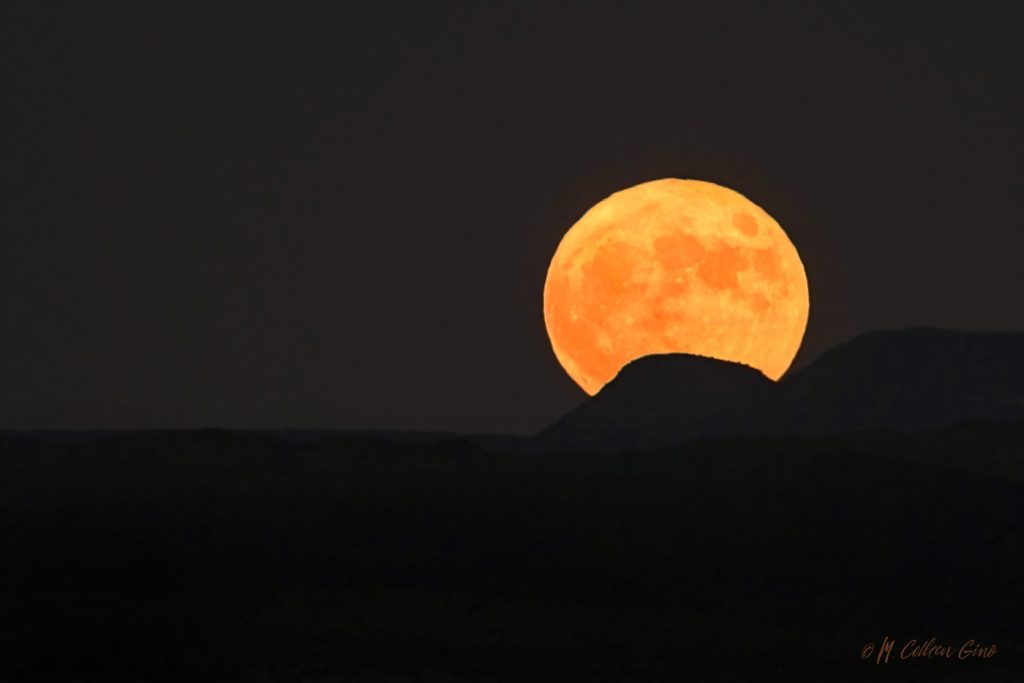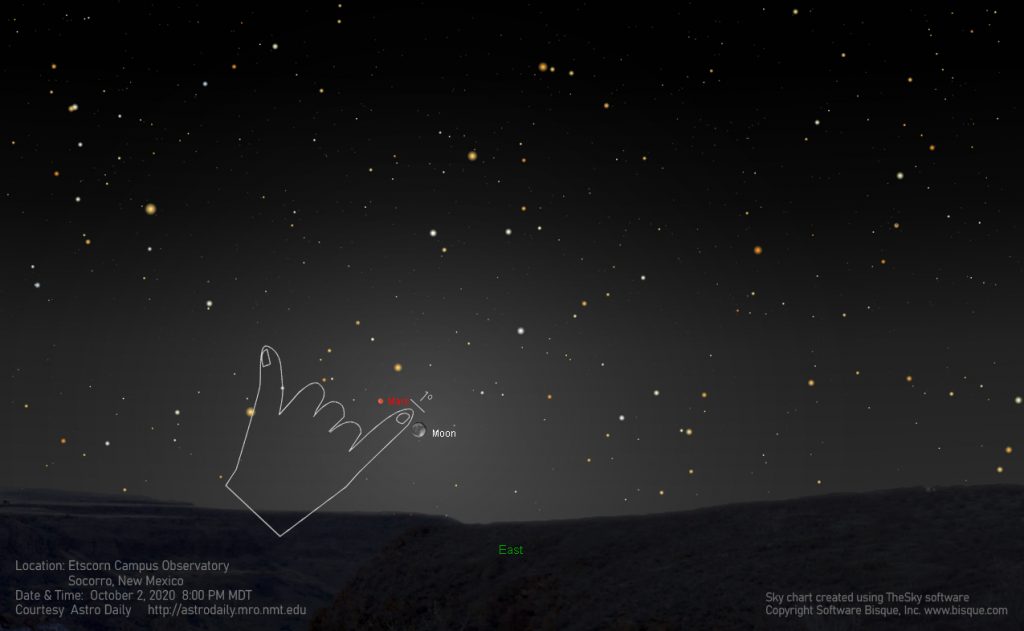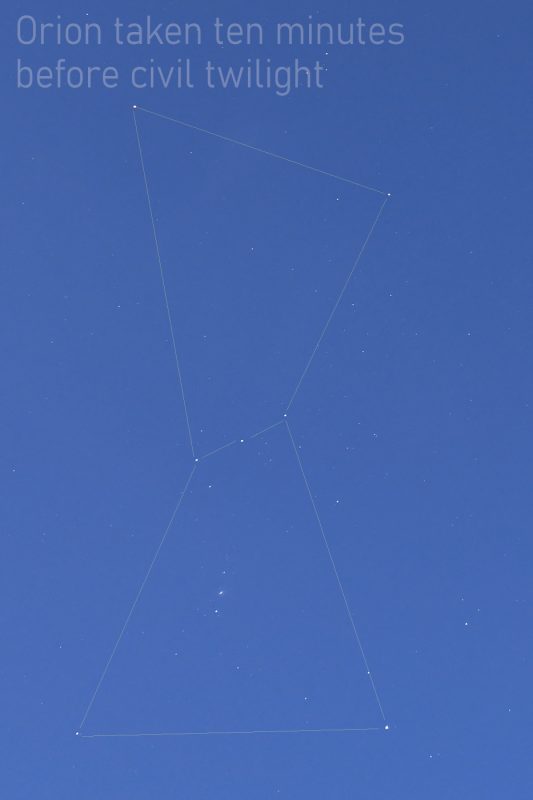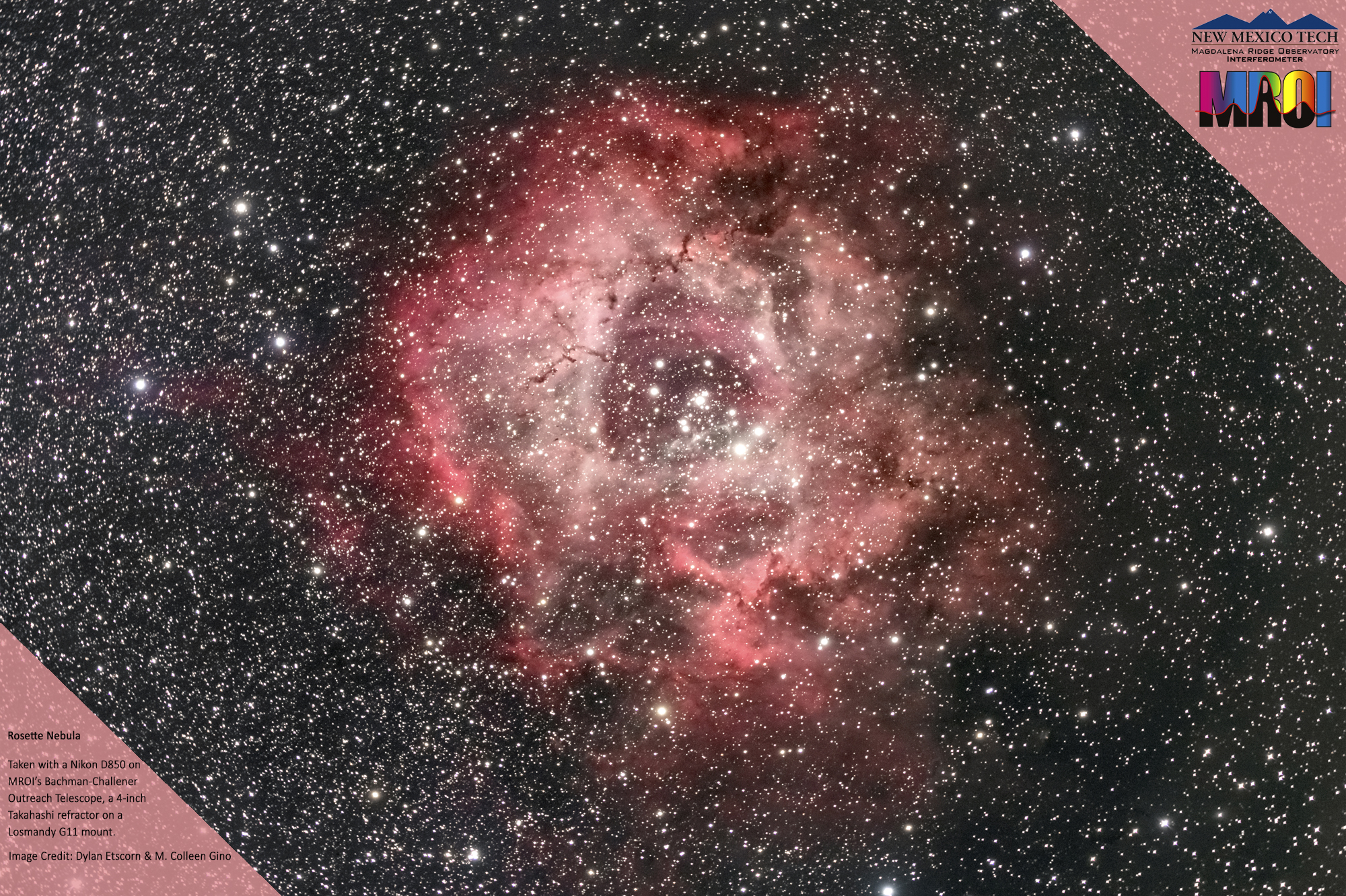Did you happen to catch the full Moon rising last night? It was a beauty! If you missed it, try again tonight, as it will rise during nautical twilight and appear to be nearly full. The Moon rose before astronomical twilight and was nearly full the night before last night’s Harvest Moon as well. Why does this happen?

Normally the Moon rises about 50 minutes later each day. But near the autumnal equinox when the ecliptic (an imaginary line in the sky that marks the annual path of the Sun) and horizon form a narrow angle, the Moon rises only 25-30 minutes later each day for several days in a row. In addition, on the days before and after the full Moon, it’s only about 1° or 2° less illuminated, as illustrated in the LunaSolCal print screens below.

If you observe the nearly-full Moon tonight you’ll be in for an extra treat – Mars will be nestled close by, only about 1.5° away. You can measure the approximate distance between the Moon and Mars using your pinky, as shown in the sky chart below. If you extend your arm out fully in front of you, your pinky will cover about 1° of the sky. Therefore, the Moon and Mars will be about a pinky-and-a-half apart. For a reminder of how to measure distances in the sky using your hands, check out this previous blog post.

If you’re up before sunrise, look to the east to find the planet Venus, which rises at about 4 AM. Venus will be easy to pick out because at a magnitude of -4 it is brighter than any other planet or star you can see in the sky. (Check out the end of this previous blog post for a brief explanation of stellar magnitude.) This morning I did a little experiment to see how close to sunrise I could still see Venus in the ever-brightening sky. Venus was easy to pick out at 6:30 AM, as was the 1.6 magnitude star Regulus in the constellation Leo a half-degree below it. If you look tomorrow morning, Venus will appear about a half-degree below Regulus, and will continue to move away from the star at the rate of about a degree per day.

Venus was still just barely visible at 6:50 AM toward the end of civil twilight, 15 minutes before sunrise. In reality, it probably would have been pretty hard for me to pick Venus out of the bright sky had I not started watching it when it was easy to find.

While you’re out looking for Venus in the pre-dawn sky, look for the constellation Orion as well. It will be easily visible into the beginning of civil twilight, appearing high in the sky to the south.

Eyes to the Skies!
M. Colleen Gino, MRO Assistant Director of Outreach and Communications
